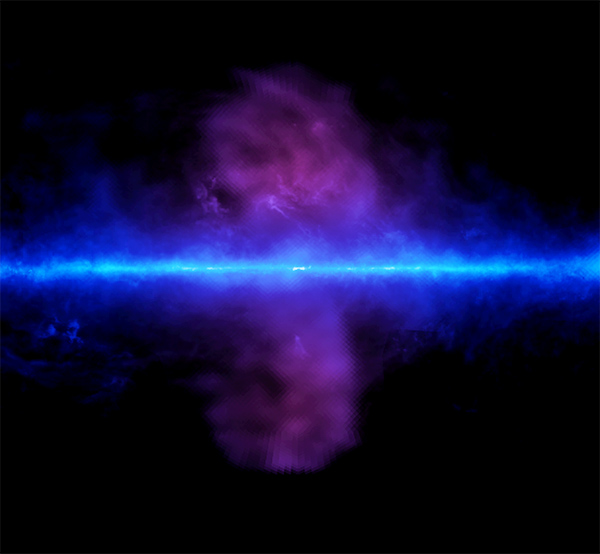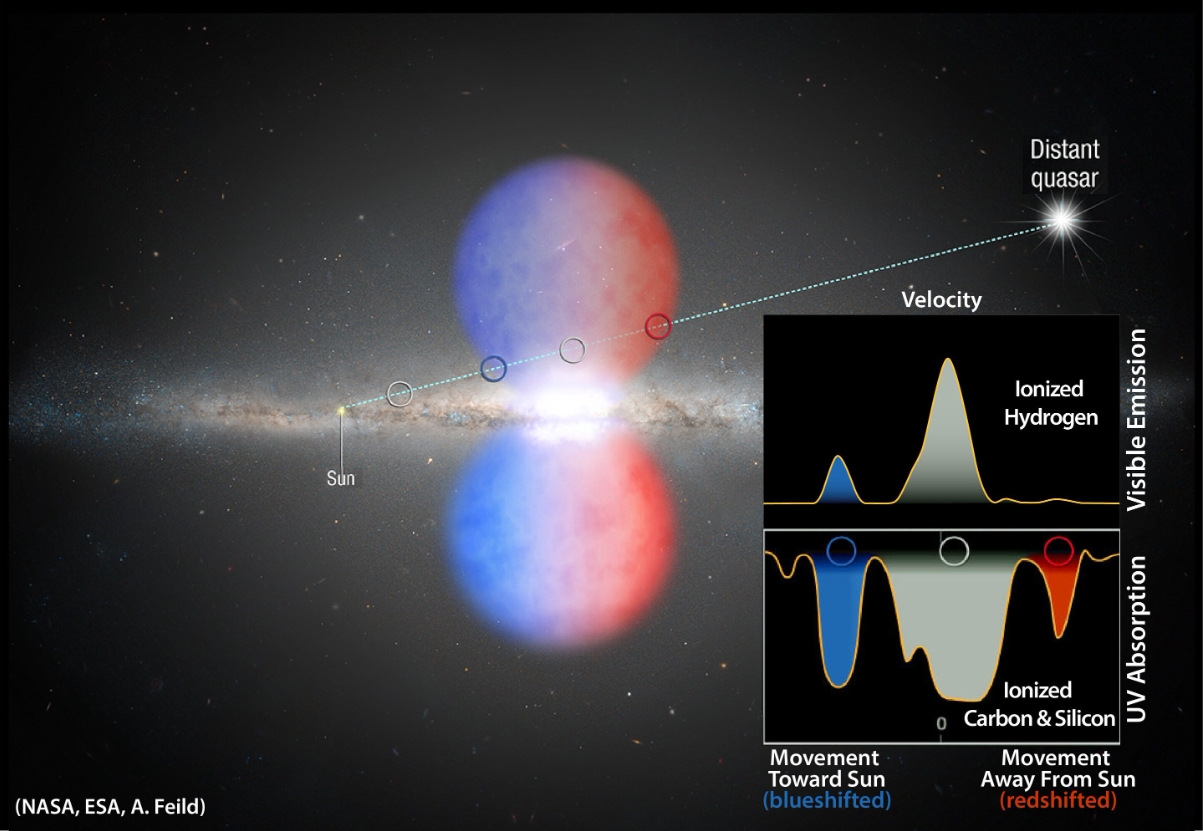Fermi Bubbles measured in visible light for the first time

For the first time, astronomers have observed visible light from two gigantic outflows of high-energy gas in our galaxy, known as Fermi Bubbles. The researchers announced their findings at the 236th meeting of the American Astronomical Society, which was held virtually for the first time since 1899.
Scientists measured the emission of light by hydrogen and nitrogen gasses in the Fermi Bubbles in the same area as a recent ultraviolet absorption calculation made by the Hubble Space Telescope.
"We combined those two measurements of emission and absorption to estimate the density, pressure, and temperature of the ionized gas, and that lets us better understand where this gas is coming from," said lead author, Dhanesh Krishnarao.
Extending 25 000 light-years both above and below the core of the Milky Way, the Fermi Bubbles were discovered in 2010 by the Fermi Gamma-Ray Telescope.
These highly-energetic outflows of gas are moving away from the center of the galaxy at millions of miles per hour. But while the source of the phenomenon has been concluded to date back millions of years ago, the events that created the bubbles remain a mystery.
With new measurements of the density and pressure of the ionized gas, researchers can now test models of the Fermi Bubbles against observations.

Astronomers used the WHAM telescope to measure huge outflows of gas extending from the Milky Way's center known as the Fermi Bubbles. Image credit: Dhanesh Krishnarao, NASA, ESA, A. Feild
"The other significant thing is that we now have the possibility of measuring the density and pressure and the velocity structure in many locations," with the all-sky WHAT telescope, said co-author Bob Benjamin, professor of astronomy at UW-Whitewater.
"We can do an extensive mapping effort across the Fermi Bubbles above and below the plane of the galaxy to see if the models that people have developed are holding up. Because, unlike the ultraviolet data, we're not limited to just specific lines of sight."
The work demonstrates the usefulness of the WHAM telescope to inform us more about the workings of the Milky Way, said co-author Matt Haffner, professor of physics and astronomy at Embry-Riddle Aeronautical University.
The galaxy's central region has long been difficult to study due to gas blocking out the view, but WHAM has given new opportunities to collect the kind of data we have for distant galaxies.
"There are regions of the galaxy we can target with very sensitive instruments like WHAM to get this kind of new information toward the center that previously we are only able to do in the infrared and radio," he added.
"We can make comparisons to other galaxies by making the same kind of measurements towards the center of the Milky Way."
Featured image credit: NASA (artwork)

THERE ARE NO MYSTERIES, BABY, JUST TAKE THE RUBBISH OUT OF YOUR HEAD AND THEN YOU CAN EXPLAIN ANY PHYSICS PHENOMENON……………Fermi Bubbles are formed in the liquid layer of the galaxy as a result of interaction with the plasma layer. The bubbles in a liquid get compressed, and the inside gets hot extremely hot and since, the pressure is so enormous that will prevent the bubbles from collapsing. The bubbling dynamics and why they are rising above and below the core of the galaxy can be easily explained by the physics of thermodynamics. Furthermore, Fermi Bubbles can be demonstrated in the laboratory, especially that nobody has been able to measure the temperature inside a single collapsing bubble before.